Tomato Martini - A Late Summer ‘Tini with the Nectar of the Love Apple — Pomme d’amour
It’s a fruit! It’s a vegetable! No, it’s a fruit! No, it’s a Tomato! It’s S u p e r f r u i t!
And a bloody magnificent superfruit it is! Tomatoes and chiles, both natives of the western hemisphere, have transformed virtually every cuisine around the world following the Spanish colonization of the Americas in the fifteenth and sixteenth centuries.
Like the worldly fruit it has become, it appears in many shapes, sizes, colors, personalities and tastes. While the chile immediately began delighting cultures around the world by adding varying degrees of piquancy to foods, from mild to almost unbearable, the tomato had a bumpy history and had to dispel some superstitious beliefs along the way. Yes, it belongs to the nightshade family, like potatoes and eggplants. No, the tomato itself is not toxic, but stay away from the vines and leaves. Few other fruits or vegetables evoke love and devotion from its admirers like a tomato.
Tomatoes are sometimes called pommes d’amour in France. Some say because it is related to a Biblical plant called the mandrake, or love plant, which was rumored to be an aphrodisiac. (Hmmm, there was considerable begetting documented in Genesis.) Some early tomatoes were called pomodoro for their golden yellow color. The Aztecs called it xitomatl, meaning “plump thing with a navel.” Other Central American peoples called it tomatl, which, apparently, the Catholic and Protestant Europeans found more palatable.
Botanically it is a fruit that is treated as a vegetable for culinary purposes. Whether it is regarded as a fruit or vegetable, it is highly admired, even elevated to the adored status. I have encountered some people throughout my life who eschew tomatoes. I wonder if, perhaps, they have never enjoyed the delights of a delicious, vine-ripened tomato. Tomatoes are plentiful year round but just try to find one out of season that comes up to the mark of a tomato that hung on long enough to soak up water and sun and deliver that indisputable full-flavored tomato wallop.
Now, about this perplexing ambiguity regarding its classification. According to my source, the reasoning for the vegetable label for culinary purposes comes from the following logic: It is used almost exclusively in hors d’œuvres, salads and main courses, and not in desserts. Exception, when canning they are treated as fruits because they are acidic enough to be canned in a hot water bath instead of in a pressure cooker as required by vegetables. Confused?
Tomatoes are not in this predicament alone. Seems that eggplants, cucumbers and all kinds of squashes, from zucchinis to pumpkins, are botanical fruits. It’s scary to think that there are certain fringes of our society that don’t know that some of their vegetables are actually fruits. If they knew, would they treat them with the same equality and respect as before?
Had enough? I’m not through. Our little tomato suffered the same fate as the 2000 presidential election. Yep! The Supreme Court stepped in to settle the great tomato controversy of 1883 by declaring the tomato a vegetable. Once again, this conclusion was based on which meal course hosted the tomato. (Nix v. Hedden (149 U.S. 304)) However, and I quote, “The holding of the case applies only to the interpretation of the Tariff Act of March 3, 1883, and the court did not purport to reclassify the tomato for botanical or other purpose.” And you think current politics are screwy!
How about one more tomato zinger? The tomato was declared the state vegetable of New Jersey. Hardly earth-shattering news, but the politicians of Arkansas, in their inimitable mountain way, declared the “South Arkansas Vine Ripe Pink Tomato” to be both the state fruit and the state vegetable in the same law, falling back on both its culinary and botanical classifications. Now we have a South Arkansas Vine Ripe Pink Tomato with a “bi” label. Really, a tomato that swings both ways and goes with anything? Just where are the tomato family values when you need them?
Exactly when our sweet, and at the same time savory, love apple got itself mixed up with cocktails is another detail that is hard to pin down. I would put my money on the earliest inventor of the Bloody Mary.
- Tomato Martini garnished with two grape tomatoes, basil and a bocconcini, “a morsel or mouthfull of mozzarella.”
I first learned of coaxing the water from a tomato in a Saveur article about 10 years ago and filed it away in my mind. Shortly after that my friend Tom Hetrick reported that he had tasted the most intriguing tomato apéritif at Clio Restaurant in Boston. When “tomato water” comes to you twice, it’s time to start paying attention.
I scoured the Internet for information and reports of others playing with their tomatoes in such ways. The first one that turns up is Michael Chiarello’s Mozzarella Martini that he introduced to his diners at Tra Vigne and is probably so named for its garnish.
Tomato Martini
Adapted from Saveur Magazine and Michael Chiarello’s Napa Style.com
It’s difficult to know exactly how much tomato water any given batch will yield, so err on the side of excess. Leftover nectar from my last batch held a nice, fresh flavor in the refrigerator for two days.
- 3-5 pounds (1.33-2.25 kg.) ripe tomatoes, cored and cut into chunky pieces
- Ice cold vodka from the freezer, optional
- Fresh basil
- Several grape or cherry tomatoes
- Several bocconcini, not more than 1 inch (2.5 cm) in diameter
- Place martini glasses in the freezer to chill.
- Place the tomato pieces in a bowl and roughly mash with a potato masher. (Saveur uses a stand mixer with a paddle to bruise and break down the tomatoes.)
- Set a colander into a large bowl and line it with several layers of cheesecloth or a clean, cotton kitchen towel and fill with the tomato pieces and any accumulated water.
- Cover the tomatoes loosely with the edges of the cheese cloth or towel and weight down with a plate and several full cans from your cupboard.
- Store in the refrigerator for several hours or for however long your tomatoes are dripping. (You can save leftover pulp for other uses.)
- Stop if you begin seeing red liquid dripping.
- Into the chilled martini glasses, measure 2 parts tomato water to 1 part chilled vodka (if using - otherwise, fill your glass to the desired capacity with tomato water).
- Rub the rim of each glass with some fresh basil and garnish with the small tomatoes, bocconcini and more basil.
Don’t be afraid to use your imagination with the tomato water and other ingredients or spirits; just don’t overwhelm it. Hendrick’s Gin with its hint of cucumber comes to mind. Leave out the spirits altogether and serve as a chilled or warm consommé with a wonton or ravioli bearing flavorful surprises inside.
Bon appétit
— Charles
Category: Cocktail
About the Author (Author Profile)
Music, food and photography are at the center of Charles’ life. He performed with the Dallas Symphony, Dallas Opera and was assistant principal bassoonist with the Fort Worth Symphony for more than 20 years. When Charles and Victor moved to Baltimore, Charles created Lone Star Personal Chef and Catering Service and taught cooking classes at Williams-Sonoma. Now in Salem, Charles is a Realtor with Coldwell Banker Mountain West Real Estate, taught cooking classes for children at the A.C. Gilbert Discovery Village, and owns and operates Charles Price Photography. Charles and Vic enjoy entertaining and frequently host dinners as fundraisers for local non-profits and charities










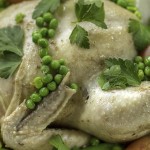



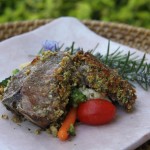
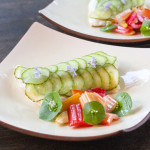
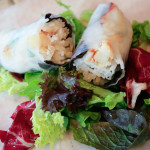




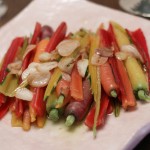
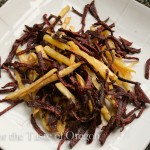


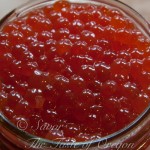
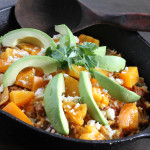

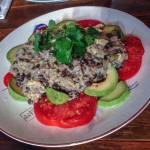

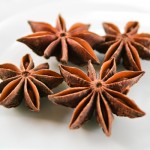



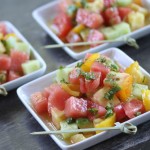


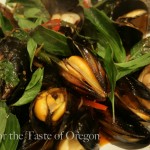






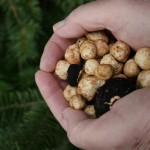



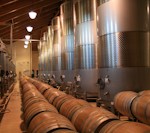
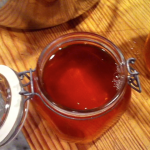











I have never heard of this technique for juicing a tomato before and I am certainly intrigued by it
This is the one I have been waiting for. Very interesting, the way to get the tomato water. I would have thought it would be red. Also, I did not know that some of the other veggies mentioned were fruits. I knew a tomato was a fruit. Now, to find some tomatoes.
[…] is more tomato lore on our Tomato Martini post. Tomato […]